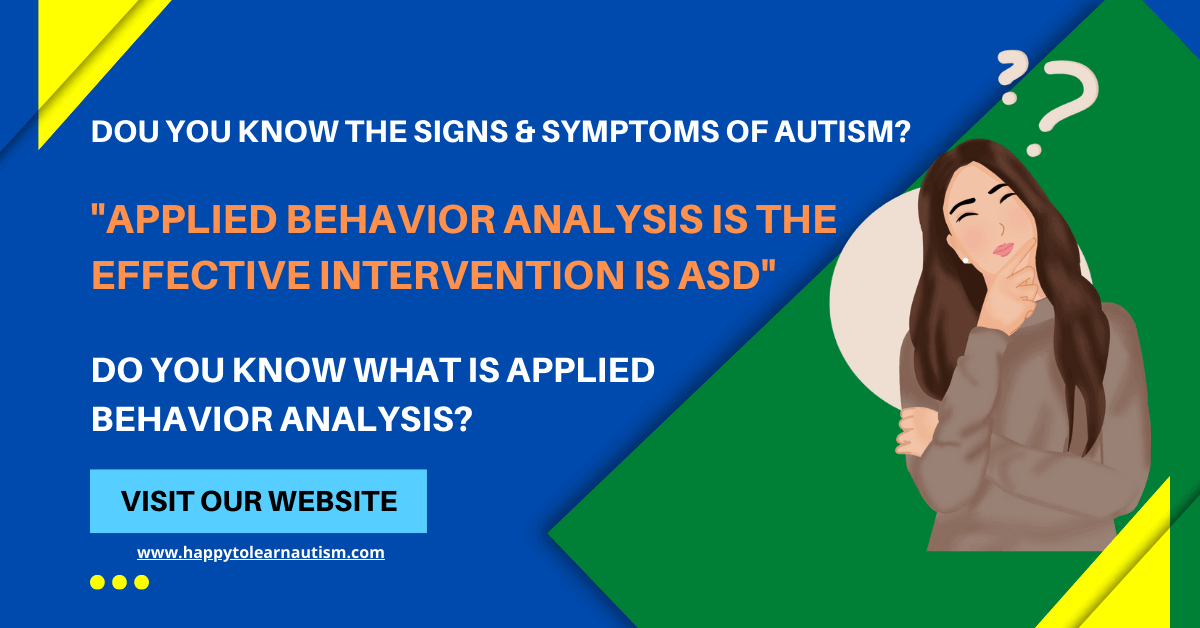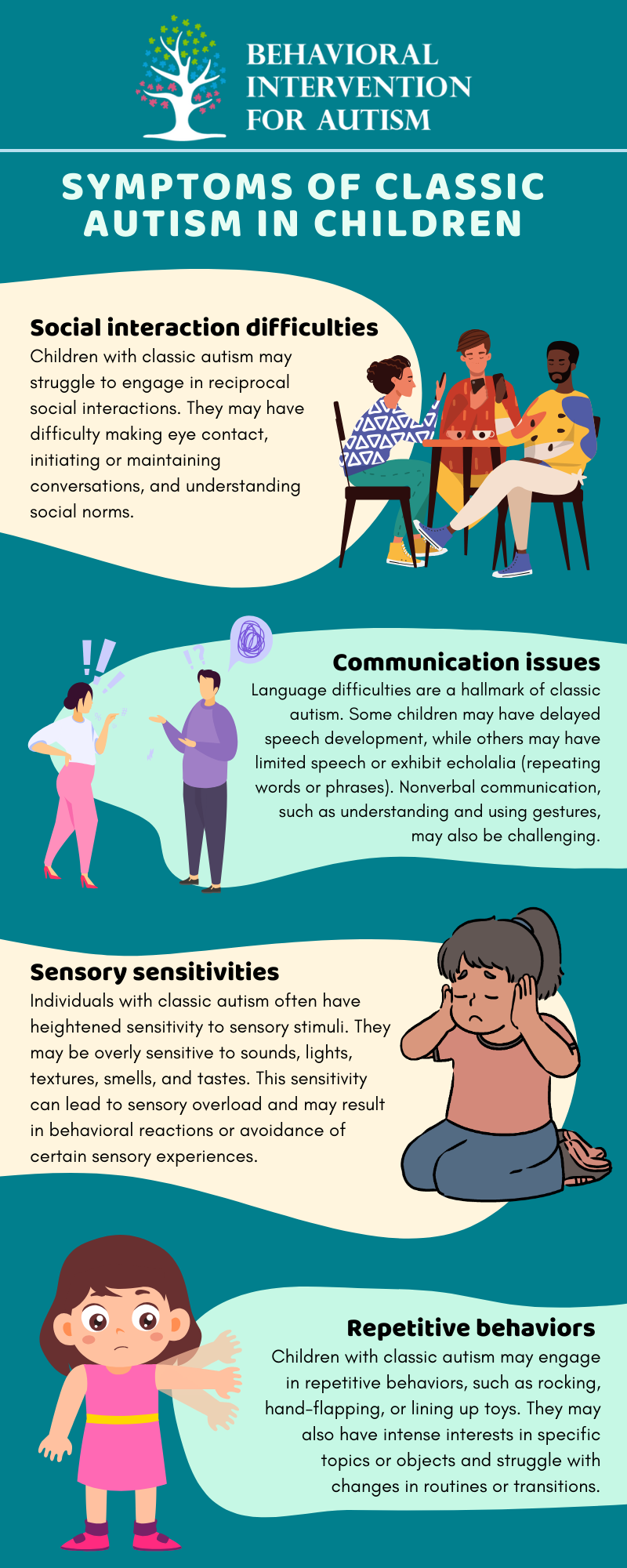Understanding the Effect of Behavioral Autism on Every Day Life and Social Interactions
You might not understand exactly how deeply behavior autism influences day-to-day life and social interactions. Individuals on the range usually navigate a world filled with interaction hurdles and sensory overload. These challenges can lead to stress and seclusion, affecting their partnerships and total health.
Specifying Behavior Autism and Its Qualities
Behavioral autism, usually referred to as autism range problem (ASD), incorporates a range of conditions defined by challenges in social communication, interaction, and repetitive habits. You could see that people with ASD usually have a hard time to interpret social cues, which can cause misunderstandings in conversations. They may discover it tough to establish eye contact or involve in little talk, making social situations feel frustrating.
Communication troubles can materialize in different means, from postponed speech advancement to a preference for using less words. Recurring habits, such as hand-flapping or rocking, can work as coping devices to take care of anxiety or sensory overload. These features can profoundly affect day-to-day life, making it essential for you to understand and sustain those with ASD. By recognizing these attributes, you can promote a setting that advertises acceptance and encourages efficient communication, assisting individuals with autism flourish in their daily communications.
The Range of Autism: Understanding Irregularity in Habits
Autism range condition (ASD) isn't a one-size-fits-all medical diagnosis; it differs widely amongst people. You could observe that some people with ASD display mild symptoms, while others may deal with more significant difficulties. This irregularity can show up in actions, passions, and sensory level of sensitivities. You might run into people who are very spoken and engage easily in conversations, while others might choose singular tasks or communicate non-verbally.
Furthermore, the means individuals with ASD reply to sensory input can differ considerably; some may be overwhelmed by loud noises or intense lights, whereas others flourish in promoting settings. The spectrum likewise consists of distinctions in social communications; some individuals might struggle to analyze social hints, while others navigate social setups with relative convenience. Understanding this variability is essential, as it assists you appreciate each individual's one-of-a-kind experience and dressmaker support to their specific requirements, fostering an extra comprehensive atmosphere for every person.
Communication Challenges Dealt With by People With Autism
When you connect with individuals on the autism spectrum, you might see their special communication obstacles. They commonly encounter difficulties with both nonverbal and verbal hints, which can influence their social communications. Understanding these obstacles is necessary for fostering much better links and assistance.

Verbal Communication Problems
Numerous individuals on the autism spectrum experience verbal communication difficulties that can significantly affect their daily interactions. Your quantity, tone, or rate might not straighten with social expectations, creating others to misinterpret your intentions. Acknowledging these difficulties can help you and your assistance network develop methods to boost communication and cultivate much better connections with others in your daily life.
Nonverbal Interaction Obstacles
Verbal interaction isn't the only challenge people on the autism range face; nonverbal communication barriers can be simply as considerable. You may locate it tough to translate body movement, facial expressions, and eye contact, which are crucial for reliable interaction. These obstacles can lead to misconceptions or false impressions of social cues, making interactions feel complex or overwhelming. You may have a hard time to share your very own emotions through nonverbal methods, leaving others unclear of your feelings or objectives. This separate can create sensations of isolation and irritation. Recognizing these barriers is critical for cultivating understanding and compassion in your interactions. By resolving nonverbal interaction, you can find techniques to enhance your social experiences and enhance your general lifestyle.
Social Communication Impacts
Social communications can usually really feel frustrating due to the special interaction challenges encountered by people with autism. Recognizing these difficulties can help you find methods to improve communication, such as practicing social abilities in safe setups or utilizing aesthetic help. Understanding your needs permits you to browse social interactions with higher confidence and simplicity.
Social Interaction and Partnership Structure in Autism
While structure connections can be testing for individuals with autism, recognizing their distinct viewpoints and interaction designs can cultivate purposeful links. You could discover that many people on the spectrum prefer straight communication and may battle with social cues or small talk. By being uncomplicated in your communications, you can aid develop an atmosphere where they really feel comfortable.
Make the effort to listen and observe just how they express themselves. This insight can direct you in steering conversations better. Participating in shared passions can also function as a bridge to deeper connections. Whether it's check my blog a pastime, a favorite program, or a mutual passion, these typical strings can open doors to relationship.
Day-to-day Live Regimen: Navigating Methods and difficulties
Steering everyday life regimens can be specifically testing for people with autism, specifically when unforeseen adjustments occur. To navigate these obstacles, think about applying aesthetic schedules or checklists.
Developing a regimen that consists of sensory breaks can likewise be useful. This helps develop an understanding setting.
Finally, practice mindfulness techniques to take care of anxiety and anxiousness. Simple breathing workouts or basing strategies can make a substantial difference. By incorporating these techniques, you can boost your everyday regimen and minimize disruptions, making life feel more manageable.
Strengths and Capabilities of People on the Autism Range
Comprehending day-to-day life routines is just one element of the autism experience. Lots of individuals on the autism range possess remarkable staminas and abilities that establish them apart.
Moreover, your memory abilities often shine, specifically in locations of interest. Aba Therapist Near Me. This propensity for maintaining info can make you a beneficial resource in areas like scientific research, modern technology, or art. You may also exhibit solid aesthetic reasoning, enabling you to imagine complex ideas and fix problems creatively
Furthermore, your distinct viewpoint on the globe can foster empathy and understanding in others, enriching social interactions. Accepting these staminas not just improves your self-confidence however likewise aids others appreciate the diverse abilities you give the table.
Developing Comprehensive Environments for People With Autism
Creating inclusive environments for people with autism starts with creating sensory-friendly rooms that satisfy their one-of-a-kind demands. You can likewise promote chances for social interaction, assisting to construct friendships and links. By making these changes, you'll add to a more inviting ambience for every person.
Designing Sensory-Friendly Spaces
While developing sensory-friendly spaces, it's vital to assess the distinct demands of individuals with autism. Start by picking relaxing shades and soft lighting to produce a soothing useful content environment. Include peaceful zones where individuals can recharge and pull back when bewildered. You'll desire to reduce loud noises and diversions, making use of soundproof materials or white noise makers to aid maintain tranquility. Take into consideration responsive components like soft materials or fidget-friendly things that can provide comfort. Establish that spaces are flexible, permitting for easy rearrangement to accommodate various tasks. Lastly, include visual routines or clear signs to help people browse the area with confidence. By thoughtfully incorporating these aspects, you can develop an inviting atmosphere that supports sensory needs and promotes general health.
Advertising Social Communication Opportunities
Designing sensory-friendly areas not just addresses specific comfort but additionally establishes the phase for significant social interactions among people with autism. To promote these communications, create comprehensive settings that invite engagement. Organize organized activities, like art classes or group games, that motivate cooperation without frustrating sensory input. Use aesthetic help and clear communication to help everybody involve pleasantly. Encourage peer mentoring, pairing individuals with autism with helpful peers that can guide them via social scenarios. Furthermore, consider holding normal community events that commemorate neurodiversity, promoting acceptance and understanding amongst all participants. By implementing these approaches, you can enhance social chances, aiding people with autism develop friendships and strengthen their social abilities in a risk-free, inviting environment.

Frequently Asked Questions
How Can Friends Assistance Somebody With Behavioral Autism?
You can support a friend with behavior autism by being patient, paying attention proactively, and appreciating their limits. Participate in activities they enjoy, communicate freely, and create a comfy atmosphere where they feel valued and recognized.
What Resources Are Offered for Moms And Dads of Kid With Autism?
You can discover numerous sources for moms and dads of children with autism, including support groups, educational internet sites, and local neighborhood solutions. Getting in touch with other parents can likewise give valuable understandings and shared experiences to aid browse difficulties.
Can Behavioral Autism Adjustment With Time?

Yes, behavioral autism can change gradually. You could notice shifts in interaction, social skills, and actions as your child expands. Early intervention and support frequently play vital roles in these developing modifications.
Just How Do Sensory Sensitivities Affect Day-to-day Live?
Sensory sensitivities can make day-to-day experiences frustrating. You might battle with loud noises or bright lights, leading to tension or evasion. Locating atmospheres that fit your needs can substantially enhance your convenience and general life.
What Prevail Misconceptions Concerning Behavioral Autism?
You might believe behavior autism only impacts interaction skills, but it's even more complicated. Many assume individuals lack compassion or intelligence, which isn't real. Recognizing these false impressions helps foster acceptance and assistance for those on the spectrum.
Behavioral autism, frequently referred to as autism spectrum disorder (ASD), includes a variety of conditions identified by challenges in social communication, interaction, and recurring actions.Social interactions can often really feel overwhelming Our site due to the unique communication challenges encountered by individuals with autism.Designing sensory-friendly spaces not just addresses specific comfort but also establishes the stage for meaningful social interactions among individuals with autism. Urge peer mentoring, combining individuals with autism with encouraging peers that can guide them via social situations. By executing these strategies, you can enhance social opportunities, assisting individuals with autism develop relationships and enhance their social abilities in a risk-free, welcoming environment.